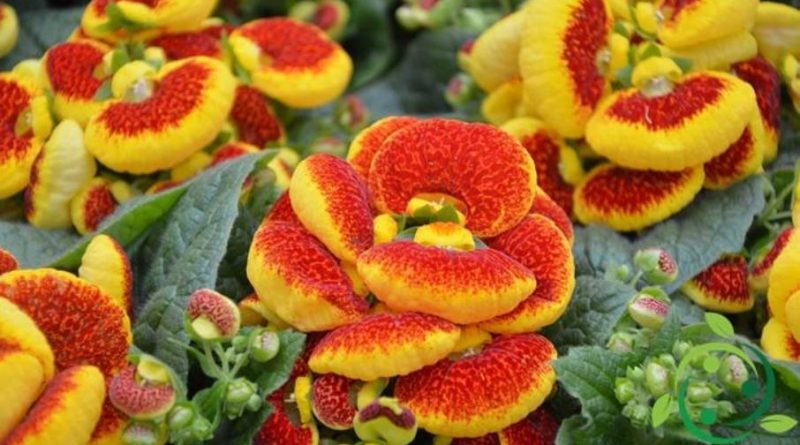How to cultivate Calceolaria
How to cultivate Calceolaria
Calceolaria, also known as the scarpetta flower or Pantofolina, is a genus of plants belonging to the Scrophulariaceae family: they are plants native to South America and New Zealand. To this genus belong annual and perennial herbaceous species with showy flowers, with various mottled yellow and red colors, in the shape of a kidney-shaped purse and of varying size depending on the species. In general, the Calceolaria is in the form of small roundish bushes, 30-40 cm high; has opposite leaves of different appearance depending on the species but mostly furry and serrated.
In this card we will see how to cultivate Calceolaria following the most appropriate agronomic measures.
The Calceolaria is an ornamental plant much appreciated for the ease of cultivation in pots, in the flowerbeds and in full ground also in the rocky gardens.
In general, the rustic and semi-rustic species of Calceolaria are grown outdoors; the more delicate ones are more suitable for cultivation in apartments or in greenhouses.
The interesting thing about this plant is that the flowers are produced throughout the year even if the most flowering occurs from spring to summer.
Among the species cultivated as ornamental plants we mention:
The Calceolaria hybrida biennial herbaceous plant, with showy flowers of various mottled colors and speckles of yellow and red, in the shape of a kidney-shaped purse united in large corymbs, the radical leaves are very large, oval and wrinkled, tender, of a light green color, those of the stem are much smaller, spring flowering.
The Calceolaria integrifolia perennial species that looks like a tiny shrub with a bushy stem, about 50 cm tall, very branched, with persistent wrinkled leaves, lanceolate with the toothed margin, carries numerous flowers in the shape of a purse, smaller than the herbaceous species, of yellow-sulphurous color, gathered at the ends of the branches.
For the Calceolaria plant it is taken into account that these plants prefer bright and sunny places even if they grow quite well in those partially shaded; it fears cold and drafts instead. If the cultivation takes place in the apartment a lot of light is required but not the exposures to the direct rays of the sun.
The soil on which to cultivate this plant should preferably be soft and loose, rich in organic substance and well drained with a slightly acid pH value.
For the water supplies it is necessary to regulate considering that this plant requires regular water supplies from spring to summer but only when the soil is completely dry. Then, in the winter period, watering must be drastically reduced if it is a perennial species.
For fertilizing it is necessary to behave differently if it is grown in the ground or in pots. In the open ground, mature manure or earthworm humus should be set up before the plant or during the early spring. The fertilizer must be mixed in the first layers of soil and covered with a layer of the same. Instead, in pot it will be appropriate from spring to autumn, administer, every 20 days, a specific fertilizer for flowering plants, suitably diluted in the water of the watering.
As far as propagation is concerned, remember that Calceolaria propagates by seed and by cutting of lateral jets.
The sowing is practiced above all for the annual species; this is done in summer using a light, fresh and loose substratum that is always kept moist until the buds appear. When the new plants can be easily handled they can be planted or potted and wait for the next spring to see them covered with flowers.
If instead we are in the presence of perennial and suffruticose calceolarie, these will have to be multiplied all year by cutting stems, using those that did not produce flowers.
The cuttings must be prepared using well sharpened and disinfected tools. They are put to root in a mixture of peat and sand in equal parts. In cold weather, the cuttings must be repaired and once they have released the roots they can be transferred to the ground or in pots and treated like adult plants.
For the planting of the calceolaria it is necessary to wait for the period of late spring when you are sure that there is no more danger of late frosts.
For the Calceolarie that will have to be cultivated in pot it is recommended to use a substratum composed of peat soil mixed with sand. Always for this form of breeding it is good to remember to carry out the repotting every 2 years in the spring period. The vase must always have a diameter of a few centimeters larger than the previous one and the soil must be reciprocated and with the same characteristics as the previous one.
To ensure that abundant and prolonged blooms are obtained, the perennial Calceolaria must be pruned by removing, through pruning, the stems that carry the withered flowers.
Finally, a mention of the diseases and diseases of Calceolaria.
The Calceolaria fears the root rot caused by water stagnation, which is why it should never be grown in heavy or asphyxiated soils. It can also be subject to aphids that form dense colonies on stems and in leaf intersections. The softer leaves are susceptible especially to the infestations of the white fly that with its punctures causes the outflow of the honeydew, therefore the plant becomes sticky and in a short time it is attacked by the fumaggine that obstructing the photosynthesis causes yellowing and the loss of the leaves. To avoid the attack of aphids and the white fly, we must avoid using fertilizers based on nitric nitrogen or in any case abundant nitrogen fertilizers.
It can also meet fungal diseases; to avoid this it is advisable to remove the dried leaves and to cut off the withered flowering stems. The phytosanitary treatments must be carried out only in case of need, by spraying the hair with specific natural-based products.

